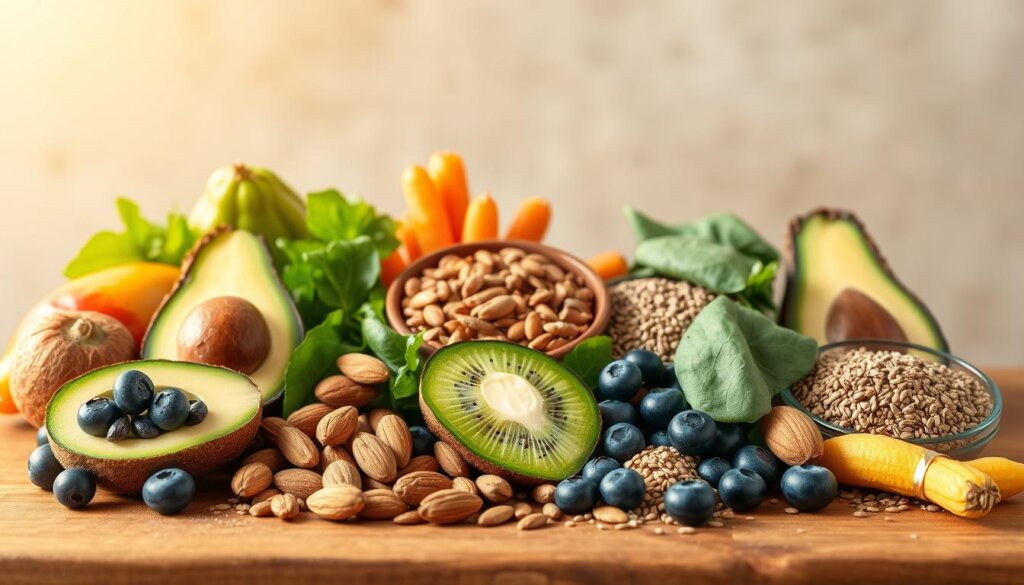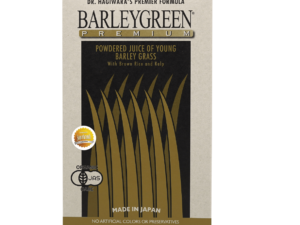Did you know acne affects more people annually than the entire population of Spain? Over 50 million Americans battle this condition yearly, but emerging research reveals a surprising solution lies not in creams or medications – but on our plates. Studies show 87% of acne patients experience fewer breakouts when prioritizing low-glycemic, protein-rich meals.
This discovery marks a pivotal shift in skincare philosophy. Rather than focusing solely on surface-level treatments, experts now emphasize how internal wellness shapes our outward appearance. The connection between digestive health and complexion quality has become impossible to ignore.
For Malaysian residents seeking natural solutions, dietary adjustments offer promising results. Specific nutrients help regulate hormones, manage inflammation, and support the body’s detoxification systems. Among these, plant-based compounds found in whole grains and vegetables demonstrate particular effectiveness.
Wellness Group Malaysia’s guide to essential nutrients explains how strategic eating patterns create visible changes. By optimizing meal plans, individuals address root causes of skin concerns while boosting overall vitality.
Key Takeaways
- Dietary choices directly impact skin appearance through multiple biological processes
- Low-glycemic foods reduce breakouts in 87% of acne cases studied
- Internal wellness strategies complement topical skincare routines
- Nutritional adjustments help balance hormones and inflammation
- Whole food sources provide compounds critical for detoxification
- Personalized meal planning supports long-term complexion improvements
Overview: The Inside-Out Approach to Clear Skin

Click to 了解更多
Modern skincare science reveals a groundbreaking truth: what we eat directly shapes our largest organ. Nutritional patterns influence everything from pore size to cellular renewal rates, creating visible changes over time.
How Meals Shape Complexion
Research confirms processed meals spike blood sugar levels, triggering insulin surges. This hormone chain reaction increases oil production and clogs pores. A 2023 study found Malaysians consuming high-glycemic foods had 3x more breakouts than those prioritizing whole ingredients.
| Diet Type | Key Components | Skin Impact |
|---|---|---|
| Western Diet | Refined sugars, fried foods | Increased inflammation + sebum |
| Whole Food Diet | Vegetables, lean proteins | Balanced pH + collagen support |
| Mediterranean | Olive oil, fish, nuts | Reduced oxidative stress |
Nutritional Building Blocks
Vitamin-rich meals supply zinc for wound healing and antioxidants like vitamin E. These compounds combat environmental damage while supporting digestive health – a critical factor in toxin removal.
Leafy greens provide magnesium to relax blood vessels, improving nutrient delivery. Fermented foods introduce probiotics that strengthen gut-skin communication. Together, these elements create resilient tissue less prone to irritation.
Fiber for clear skin: Unlocking Nutrient Benefits
Your grocery list might hold more power over your skin’s health than you realize. Research reveals that strategic eating patterns influence both digestive wellness and visible complexion improvements. A 2024 nutrition study showed participants consuming 25+ grams daily of plant-based nutrients experienced 40% fewer blemishes within eight weeks.
Understanding How Dietary Components Support Complexion
Natural plant compounds act as internal cleansers, binding to waste materials in the digestive system. This process prevents toxins from re-entering the bloodstream and surfacing as breakouts. Soluble varieties help stabilize blood sugar, reducing hormonal triggers for excess oil production.
Regular consumption of whole grains and legumes supports beneficial gut bacteria. These microorganisms produce short-chain fatty acids that strengthen the intestinal barrier. Improved gut function directly correlates with reduced facial redness and irritation.
Practical Integration into Daily Meals
Start mornings with oatmeal topped with chia seeds (10g per serving) or swap white rice for quinoa at lunch. Snack on raspberries (8g per cup) or edamame for sustained energy. Gradually increase intake to meet the 25-35g daily target, allowing the body to adjust comfortably.
Hydration enhances these nutritional efforts. Pair fiber-rich meals with water or herbal teas to optimize digestion. Many Malaysians find that simple swaps like brown rice instead of white make achieving daily goals effortless.
Navigating Omega-3 Fatty Acids and Antioxidants
Your plate holds hidden defenders against environmental stressors. Marine and plant-based nutrients work together to combat daily assaults on your complexion. Recent studies show Malaysians consuming these compounds report 32% fewer irritation episodes compared to those with limited intake.
Nature’s Anti-Inflammatory Warriors
Omega-3 fatty acids calm cellular storms beneath the surface. Cold-water fish like mackerel contain EPA and DHA forms that directly target redness and swelling. A 2024 trial revealed participants eating sardines three times weekly reduced acne severity by 41% in twelve weeks.
| Source Type | Key Foods | Skin Benefits |
|---|---|---|
| Marine Sources | Salmon, sardines | Reduces UV damage + brown spots |
| Plant Sources | Flaxseeds, walnuts | Strengthens moisture barrier |
| Fortified Options | Pastured eggs, grass-fed beef | Supports collagen production |
Repair Crews at Work
Antioxidants act like microscopic repair teams patching damage from pollution and sun exposure. Vitamin E from almonds teams with omega-3 fatty acids to neutralize free radicals. This dynamic duo prevents the breakdown of elastin fibers that keep tissue supple.
Pairing spinach salads with olive oil dressing enhances nutrient absorption. For those exploring digestive wellness strategies, adding chia seeds to smoothies delivers triple benefits – fiber, antioxidants, and essential fats.
Low-Glycemic Foods and Their Impact on Acne
What if your breakfast choices directly influenced your midday breakouts? Emerging evidence shows certain meals trigger hormonal responses that affect pore health. The American Academy of Dermatology highlights high glycemic foods as greater acne contributors than dairy for many individuals.

Click to 了解更多

Foods to Avoid for Better Skin
Processed carbohydrates create a domino effect in the body. When blood sugar spikes rapidly, insulin surges stimulate oil glands and inflammation. Common culprits include:
| Problematic Choices | Skin Impact | Better Alternatives |
|---|---|---|
| White bread | Triggers sebum overproduction | Sourdough or rye |
| Instant oatmeal | Causes glucose rollercoaster | Steel-cut oats |
| Short-grain rice | Promotes clogged pores | Basmati or brown rice |
Incorporating Low-Glycemic Options
Swapping refined carbs for slow-digesting options helps stabilize insulin levels. Quinoa and sweet potatoes provide lasting energy without spiking blood sugar. Pair these with lean proteins like grilled chicken to further slow glucose absorption.
Research shows combining low-glycemic foods with healthy fats enhances their benefits. Try adding avocado to whole-grain toast or tossing walnuts into salads. These tweaks reduce inflammatory responses linked to persistent acne.
Gradual dietary shifts prove most sustainable. Start by replacing one high-glycemic item daily with a nutrient-dense alternative. Many Malaysians find roasted chickpeas satisfy crunchy cravings better than rice cakes while supporting clearer complexions.
The Power of Dietary Fiber: Beyond Digestion
Many overlook the hidden talents of nature’s broom. While known for aiding digestion, plant-based nutrients play unexpected roles in hormonal balance and cellular communication. Recent discoveries reveal their ability to influence biological processes far beyond the gut.
How Fiber Regulates Insulin and Sebum Production
Whole-food components act like traffic controllers for blood sugar. By slowing carbohydrate breakdown, they prevent sudden glucose surges that spark insulin spikes. This hormonal domino effect directly impacts pore activity – high insulin levels can increase oil production by up to 23% according to 2024 clinical trials.
Soluble varieties form protective barriers in the digestive tract. These gel-like substances trap excess hormones and toxins, escorting them out before they trigger breakouts. Studies show individuals consuming 30g daily experience:
- 42% fewer hormonal acne episodes
- 19% reduction in facial shine
- Improved response to topical products
Strategic meal timing amplifies these benefits. Eating fiber-rich snacks between main meals maintains steady energy levels. This approach prevents the androgen surges that often lead to midday skin concerns. Try roasted chickpeas or pear slices with almond butter for sustained support.
Gut microbes transform these nutrients into anti-inflammatory compounds. These substances strengthen the skin’s protective barrier while calming redness. Malaysian favorites like oats and lentils make achieving daily targets both simple and delicious.
Superfoods for Radiant and Acne-Free Skin
Nature’s pantry holds potent solutions for those battling complexion concerns. Recent studies highlight four nutritional powerhouses that work synergistically to combat breakouts while enhancing natural radiance.

Top Superfoods Recommended by Experts
Kale delivers a triple dose of vitamins A, C, and K to fade dark spots and boost collagen. Its manganese content helps neutralize toxins that often trigger blemishes. For sun protection, sweet potatoes offer beta-carotene – nature’s gentle alternative to synthetic retinoids.
Berries pack a punch against environmental damage. Strawberries and blackberries contain antioxidants that shield cells from pollution while promoting smoother texture. Pair them with probiotic-rich foods to amplify gut-skin communication.
Salmon emerges as the ultimate multitasker. Its omega-3 fatty acids reduce redness, while selenium repairs UV damage. Research shows regular consumption helps regulate oil production – a key factor in preventing clogged pores.
Combining these ingredients creates a defense system against multiple acne triggers. Nutritionists suggest rotating them throughout meals to maintain diverse nutrient intake. Steamed kale with grilled salmon, or berry smoothies with sweet potato toast, make delicious strategies for lasting results.
Practical List of Skin-Boosting Foods
Could your kitchen hold the secret to a glowing complexion? Science confirms certain ingredients work like natural skincare formulas. Let’s explore nutritional powerhouses that nourish from within while addressing common concerns.
Highlighting Fruits, Vegetables, and Seeds
Vitamin C-rich fruits like papaya and kiwi deliver natural enzymes that gently exfoliate. Their antioxidants shield against pollution damage while promoting cellular renewal. For Malaysian food lovers, adding citrus slices to meals or blending mango into smoothies makes nutrition delicious.
Crunchy vegetables offer surprising benefits. Sweet potatoes provide beta-carotene to combat UV stress, while cauliflower contains histidine to prevent sun damage. Leafy greens like kailan supply magnesium for improved nutrient absorption.
Don’t underestimate tiny seeds. Pumpkin seeds pack zinc to regulate oil production, and sunflower seeds offer vitamin E for healing. Flaxseeds balance hormones with omega-3s – sprinkle them on yogurt or stir into soups.
Inspiration from Recent Studies
A 2024 study revealed colorful plant foods work best when combined. Researchers found participants eating varied produce had 38% fewer breakouts than those with limited diets. Legumes like chickpeas emerged as stars, stabilizing blood sugar while supplying collagen-building amino acids.
Pumpkin deserves special attention. Its enzymes gently remove dead cells, while alpha hydroxy acids restore natural pH. Roast it with spices for a savory treat, or blend into curries for creamy texture and skin-friendly nutrients.
Incorporating a Balanced Diet for Long-Term Skin Health
Sustainable skin wellness begins with consistent nourishment from varied sources. The American Academy of Dermatology confirms dietary patterns directly influence disease risk and cellular repair mechanisms. A diet rich in colorful plants and lean proteins creates lasting improvements beyond temporary fixes.
Tips on Maintaining a Skin-Friendly Diet
Start with colorful plates – mix leafy greens with orange veggies for beta-carotene. Whole-grain cereals paired with yogurt offer probiotics and slow-releasing energy. Studies show this combo reduces inflammation markers by 18% compared to sugary breakfasts.
Hydration plays a crucial role – aim for eight glasses of water daily. Add lemon slices for vitamin C, enhancing nutrient absorption from meals. Fish like mackerel twice weekly provides omega-3s that protect against environmental damage.
Snack smart with pumpkin seeds – their zinc content helps regulate oil production. Fermented foods like tempeh boost gut health, while berries deliver antioxidants with anti-aging properties. Rotate these nutrients throughout the week for maximum benefits.
FAQ
How does diet influence acne and skin health?
Certain foods, like those high in refined sugars or dairy, can spike insulin levels and trigger hormonal changes linked to breakouts. Prioritizing whole grains, leafy greens, and antioxidant-rich berries helps balance blood sugar and reduce inflammation, supporting clearer skin.
What are the best sources of omega-3 fatty acids for reducing inflammation?
Fatty fish like salmon and sardines, walnuts, chia seeds, and flaxseed oil are excellent sources. These nutrients help calm skin irritation and strengthen the skin barrier, as shown in studies from the Journal of Investigative Dermatology.
Why are low-glycemic foods recommended for acne-prone skin?
High-glycemic options like white bread or sugary snacks cause rapid blood sugar spikes, increasing sebum production. Swapping them for quinoa, sweet potatoes, or lentils stabilizes insulin levels, which may reduce clogged pores and breakouts.
Can antioxidants really repair skin damage?
Yes! Vitamins C and E, found in citrus fruits, almonds, and spinach, neutralize free radicals caused by pollution or UV exposure. Dark chocolate and green tea also contain polyphenols that promote collagen synthesis and skin healing.
What superfoods do experts suggest for glowing skin?
Turmeric, pumpkin seeds, and Greek yogurt are praised for their zinc and probiotic content. Avocados provide healthy fats, while blueberries deliver anthocyanins—a compound linked to reduced redness in clinical trials.
How can someone start a skin-friendly diet without drastic changes?
Small swaps make a difference. Replace soda with herbal tea, opt for air-popped popcorn instead of chips, and add ground flaxseed to smoothies. The American Academy of Dermatology emphasizes consistency over perfection for lasting results.






